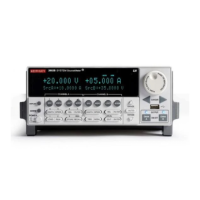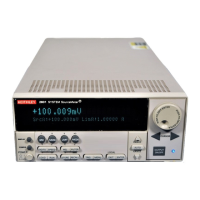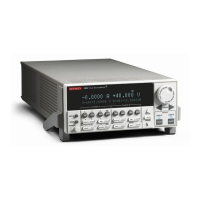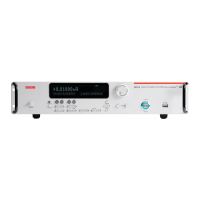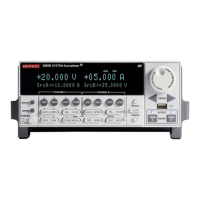System SourceMeter® Instrument Reference Manual Section 2:
2600BS-901-01 Rev. C / August 2016 2-107
Communication status indicators
The remote (REM), talk (TALK), listen (LSTN), and service request (SRQ) indicators show the
communication bus status. Each of these indicators is described below.
Status indicator Applies to
REM GPIB, VXI-11, USB, RS-232
TALK GPIB only
LSTN GPIB only
SRQ GPIB, VXI-11, USB, RS-232
The SRQ indicator applies to all available communication buses, however actual service requests
only apply to GPIB, USB, and VXI-11 (see Status byte and service request (SRQ) (on page E-15) for
more information).
REM
This indicator is illuminated when the instrument is in the remote control state. When the instrument is
in the remote control state, all front-panel keys, except for the EXIT (LOCAL) key, and OUTPUT
ON/OFF control, are locked out. When REM is off, the instrument is in the local control state and
front-panel operation is restored.
TALK
This indicator is on when the instrument is in the talker active state. Place the instrument in the talk
state by addressing it to talk with the correct talk command. TALK is off when the instrument is in the
talker idle state. Place the instrument in the talker idle state by sending a UNT (untalk) command,
addressing it to listen, or by sending the IFC (interface clear) command.
LSTN
This indicator is on when the instrument is in the listener active state, which is activated by
addressing the instrument to listen with the correct listen command. LSTN is off when the instrument
is in the listener idle state. Place the instrument in the listener idle state by sending UNL (unlisten),
addressing it to talk, or by sending the IFC (interface clear) command over the bus.
SRQ
You can program the instrument to generate a service request (SRQ) when one or more errors or
conditions occur. When this indicator is on, a service request has been generated. This indicator
stays on until all conditions that caused the SRQ are cleared.
Note that while the SRQ indicator turns on when a service request is generated, actually it reflects the
state of the Master Summary Status (MSS) bit and not the request for service (RQS) bit (see "Bit 6,
Request Service (RQS)/Master Summary Status (MSS)" in the topic Status Byte Register (on page E-
16) for more detail). Therefore, performing a serial poll will not turn off the indicator. In order to turn off
the indicator, you must clear all of the conditions that caused the MSS bit to be set.
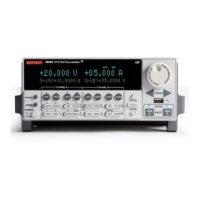
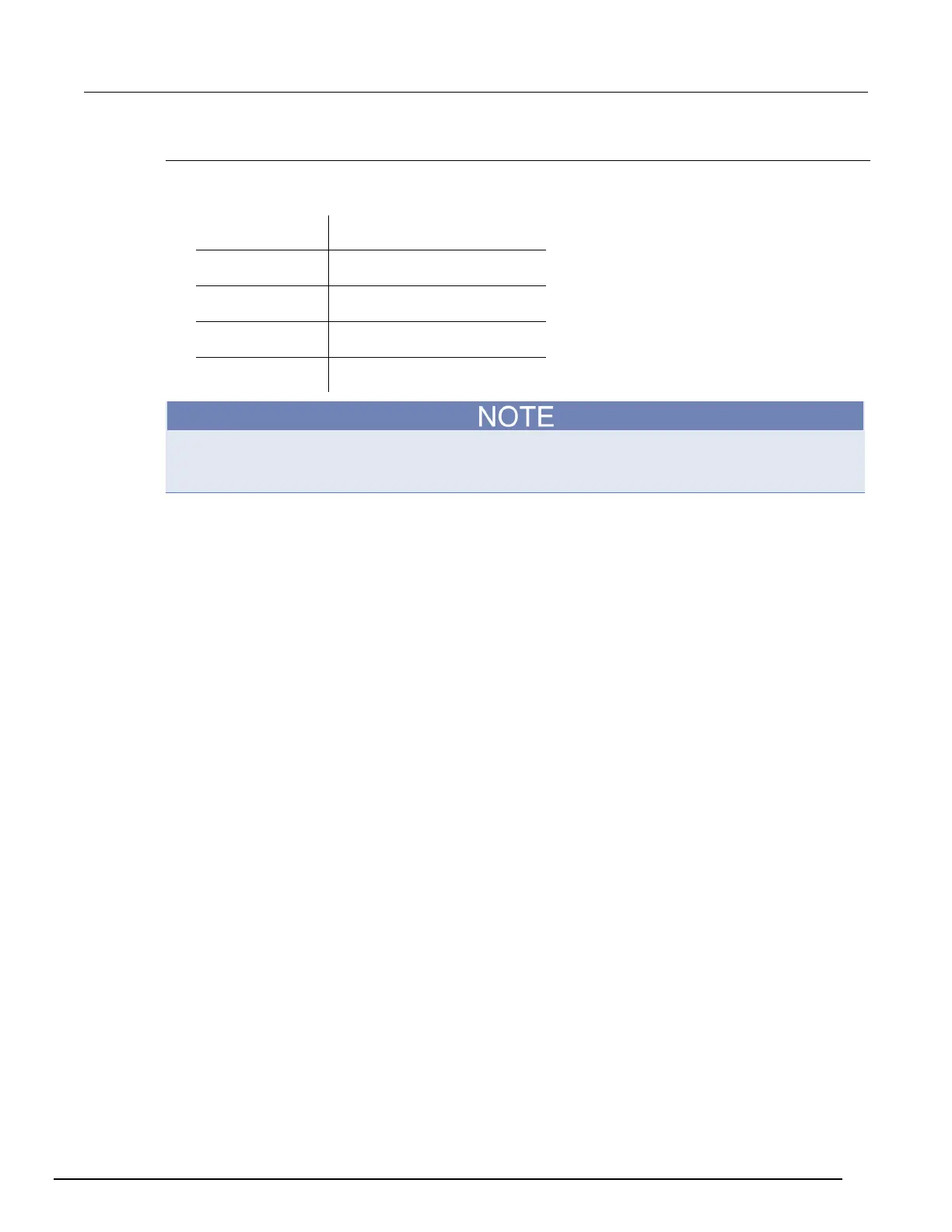